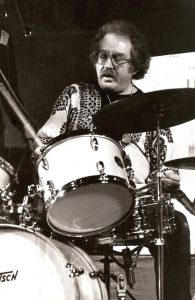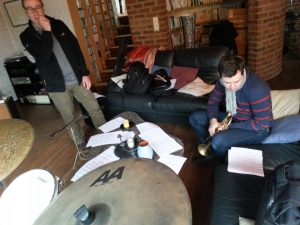Here are few videos from Michael Griener, a very active drummer and teacher in Germany. He has been hugely encouraging and directly helpful in me developing this little business, and in getting Cymbal & Gong cymbals to drummers in Germany. He has been a big fan of the Leon Collection and Mersey Beat cymbals especially, and in these videos you can hear a lot of them, masterfully played.
Here he is using a Merseybeat ride, Leon Collection crash and hihats, and a special 22″ Dizzy-style China prototype, with rivets and a large chunk rudely cut out of it by Cymbal & Gong’s proprietor, Tim Ennis. Plus a bell and some splashes by another brand:
Geoff Goodman Quintet – Noch eins für Heinz
“I replaced Billy Elgart in that band recently–” – MG
“That’s extremely cool!” – TB
Sofakonzert #1: Stephan Abel & Band spielen “The New Standard”
Into The Shed vol. 41 feat. Rudi Mahall/Michael Griener
Uschi Brüning sings Billie Holiday
“She used to be the most famous singer in the GDR (East Germany).” – MG

 Mel Lewis talks about cymbals in his 1985 Modern Drummer interview. This is pretty much the bible on the subject, as it relates to jazz:
Mel Lewis talks about cymbals in his 1985 Modern Drummer interview. This is pretty much the bible on the subject, as it relates to jazz: Originally posted on the CRUISE SHIP DRUMMER! blog in
Originally posted on the CRUISE SHIP DRUMMER! blog in